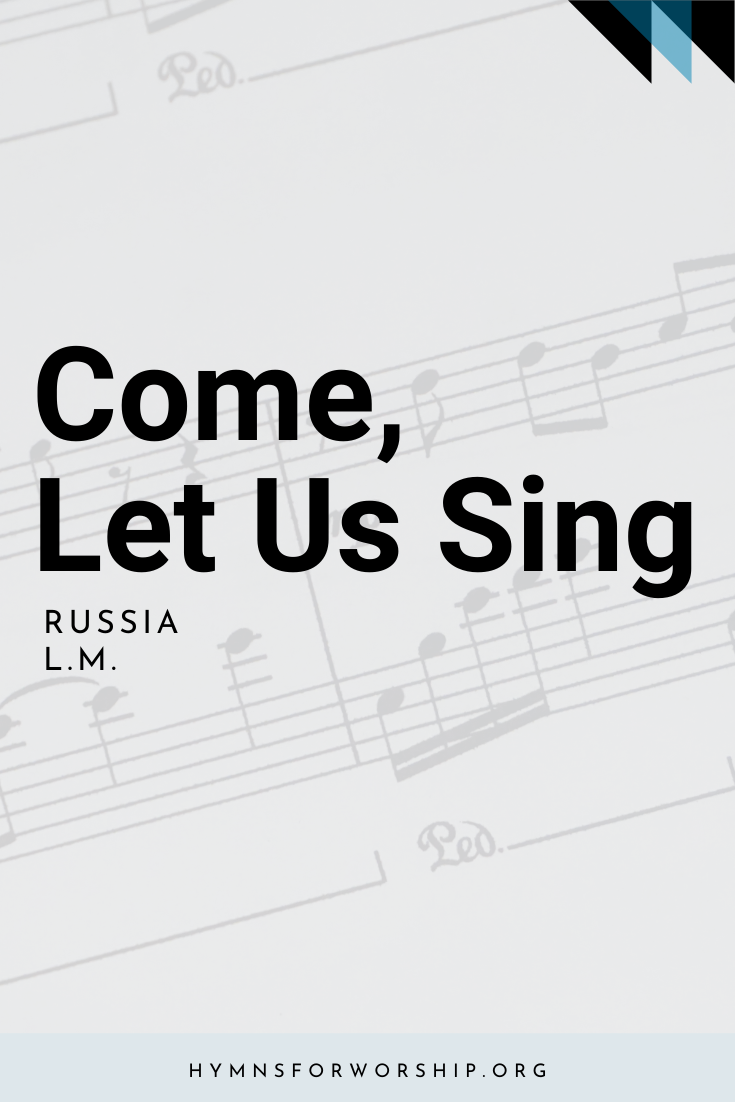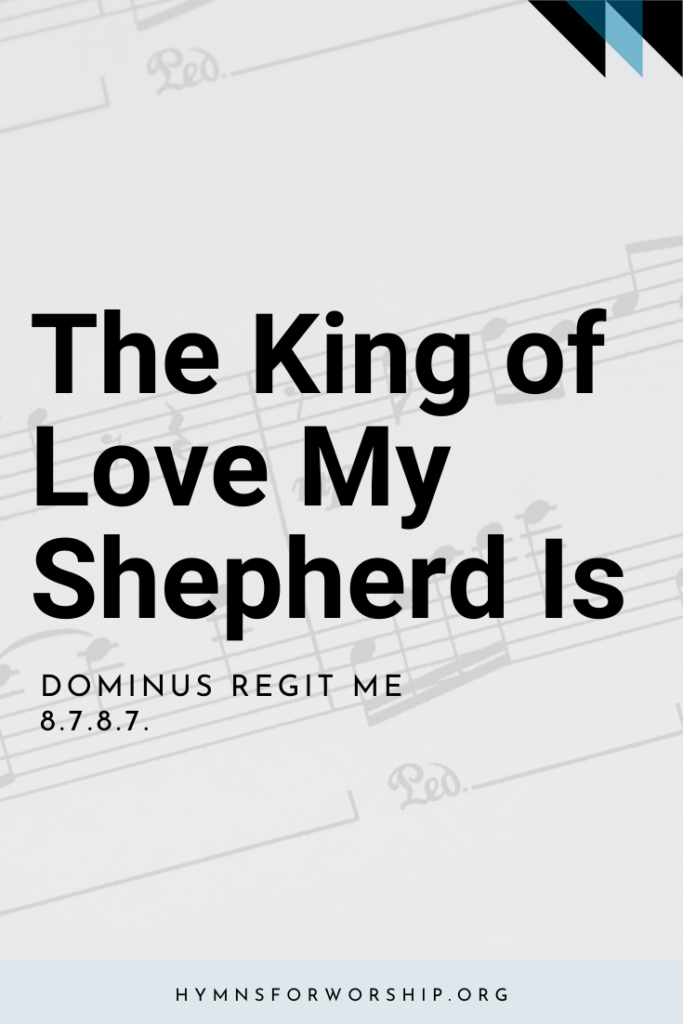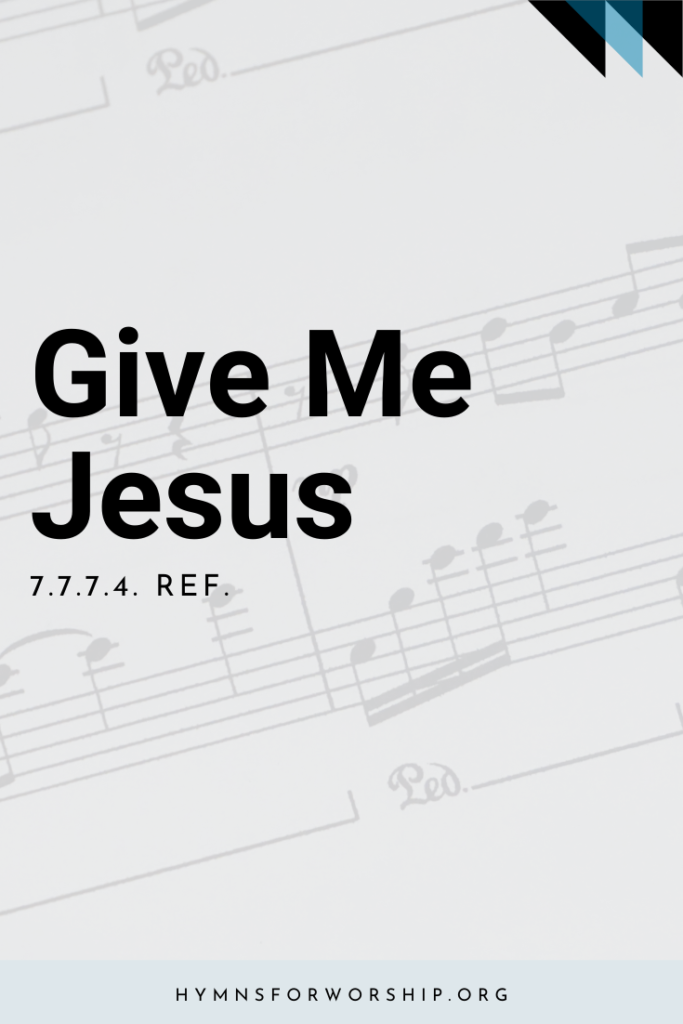JESUS CHRIST >> GLORY & PRAISE
SDAH 252
Come, let us sing the song of songs-
The angels first began the strain-
The homage which to Christ belongs:
“Worthy the Lamb, for He was slain!”
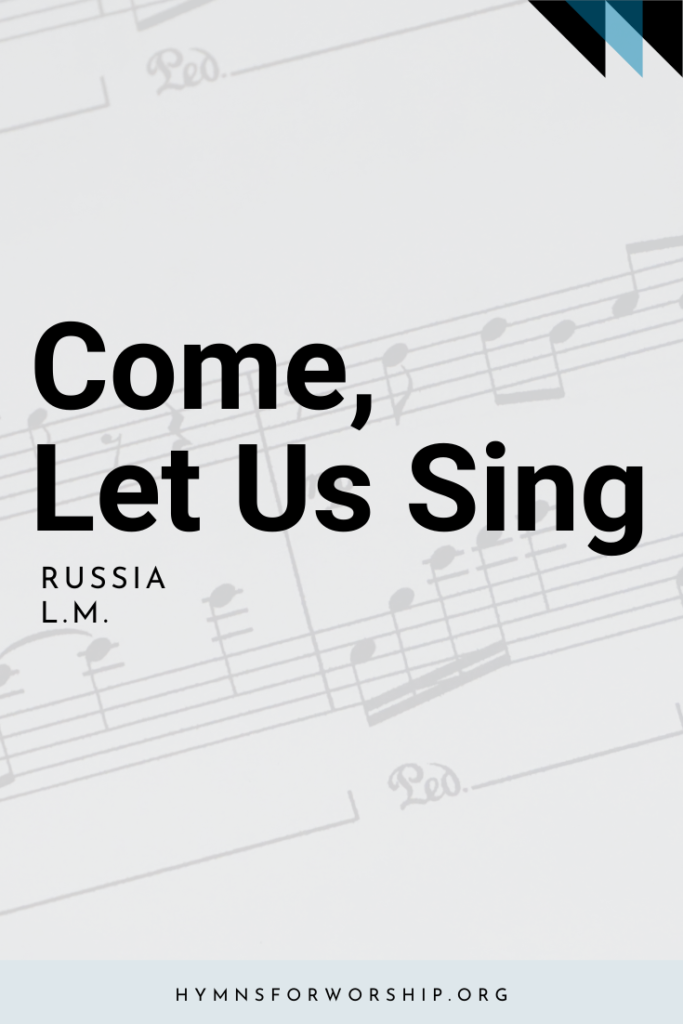

Text
1
Come, let us sing the song of songs-
The angels first began the strain-
The homage which to Christ belongs:
“Worthy the Lamb, for He was slain!”
2
Slain to redeem us by His blood,
To cleanse from every sinful stain,
And make us kings and priests to God:
“Worthy the Lamb, for He was slain!”
3
To Him who suffered on the tree,
Our souls, at His soul’s price, to gain,
Blessing, and praise, and glory be:
“Worthy the Lamb, for He was slain!”
4
To Him, enthroned by filial right
All power in heaven and earth proclaim,
Honor, and majesty, and might:
“Worthy the Lamb, for He was slain!”
5
Long as we live, and when we die,
And while in heaven with Him we reign,
This song our song of songs shall be:
“Worthy the Lamb, for He was slain!”

Hymn Info
Biblical Reference
Rev 5:9-13
Author
James Montgomery (1771-1854)
Year Published
1841
Hymn Tune
RUSSIA
Metrical Number
L.M.
Composer
Adapted from D. Bortnianski (1752-1825)
Year Composed
1825
Alternate Tune
WAREHAM, SDAH 174 and 226
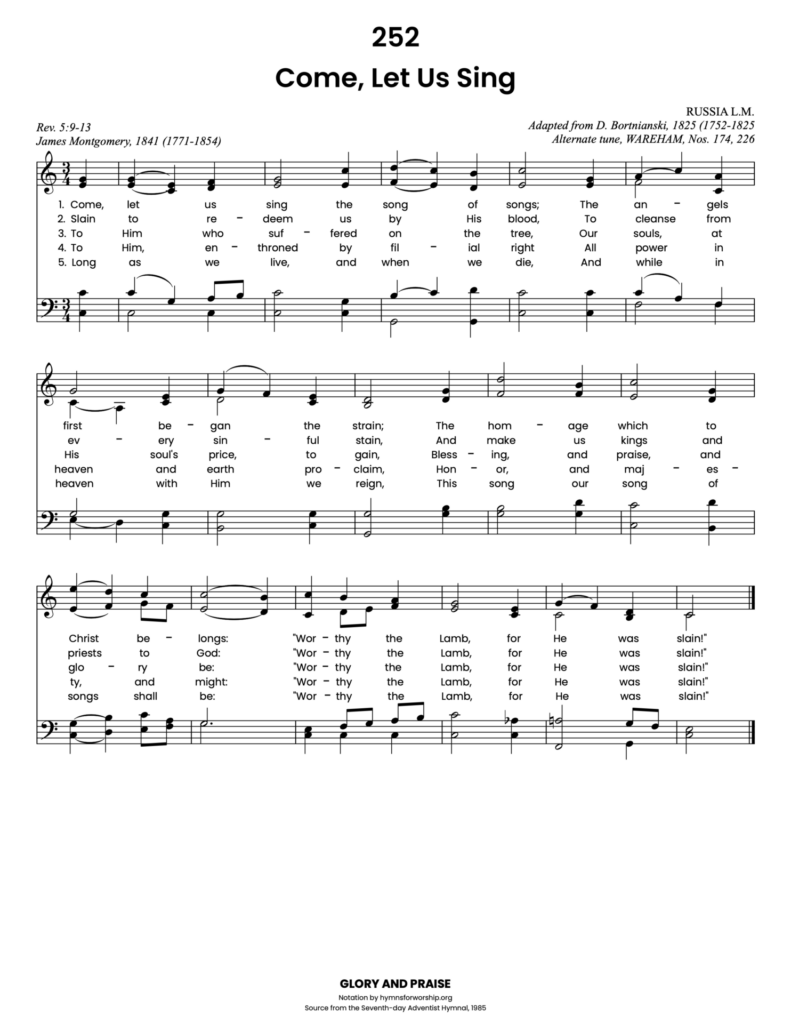
Get the hymn sheet in other keys here
Notes
Make each hymn more meaningful with these helpful tools: Short, ready-to-use hymn introductions for church bulletins, multiple ways to introduce a hymn based on your worship theme and in-depth history and insights to enrich your song service.

